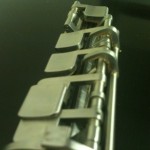![IMG_0282[1]](https://www.tammyevansflute.com/wp-content/uploads/2013/08/IMG_02821-150x150.jpg) It has been a while since I attended the annual National Flute Association convention, but I just returned from the one held in New Orleans from August 8 – 11. The convention is simultaneously overwhelming, exhausting, and inspirational. I performed and presented during this particular convention, saw a lot of friends and colleagues, attended as many recitals and workshops as possible, and enjoyed the city of New Orleans before retreating to South Dakota to prepare for the upcoming semester at South Dakota State University.
It has been a while since I attended the annual National Flute Association convention, but I just returned from the one held in New Orleans from August 8 – 11. The convention is simultaneously overwhelming, exhausting, and inspirational. I performed and presented during this particular convention, saw a lot of friends and colleagues, attended as many recitals and workshops as possible, and enjoyed the city of New Orleans before retreating to South Dakota to prepare for the upcoming semester at South Dakota State University.
I arrived late on Wednesday evening to prepare for a Thursday performance. My performance on Thursday was shared with a flute quartet based in New York as well as several performers I know in person and those I have met online. Our portion of the program included works based on this internet connection; all performers and composers know each other online. I had met some of them in person before, but I met a few others in person for the first time at this event. Meerenai Shim and Erica Sipes gave a performance for contrabass flute and piano by Daniel Felsenfeld; I gave a performance of a new work called Dreams Grow Like Slow Ice for glissando headjoint and electronics by Jay Batzner; Alexis Del Palazzo and Erica Sipes gave the premiere of a work for flute and piano by Peter Amsel. We also performed a quartet by Nicole Chamberlain called Tamar; those performers included Kathy Farmer, Alexis Del Palazzo, Meerenai Shim, and me.
After my performances, I spent some time visiting the exhibits, which is quite an event. Vendors are there to sell everything from flutes to sheet music to accessories. I had a great time play testing dozens of flutes, which allows me to keep up with what’s available on the market for student, intermediate, and professional flutes.
Keith Underwood’s class was another worthwhile event that afternoon. He discussed breathing and how to use the breath builder to become more aware of what the air stream is doing. His teaching is remarkably effective even in short doses.
On Friday, I attended one of the early sessions on international career opportunities. The presenter, Alice Dade, performed in orchestras in Europe, and detailed her experiences in getting those jobs and working overseas. I saw a bit of the Atlanta Metro Youth Flute Choir concert before heading back to search for sheet music at the exhibits. Later, I went to a workshop on a new pedagogical method for flute by Patricia George and Phyllis Louke. Since I use their other books for my students and just bought this new one at the convention, it was helpful to attend this workshop.
It was great to attend the masterclass given by my former teacher, Angela Jones-Reus. She was my teacher during my doctoral studies at the University of Georgia, and I hadn’t seen her since my 2010 graduation. I enjoyed watching her teach, and we had a chance to catch up. I ran into my former teacher Kate Lukas from Indiana University in the hallway; I hadn’t seen her since 2005. Being able to reconnect with friends and colleagues that you don’t often see is one of the very best things about the NFA convention.
Next on my schedule was to attend a recital of world premieres. I was able to reconnect again with colleagues, meet some in person who I had previously only known through mutual friends, and hear some really good new music.
On Saturday, I attended a panel discussion on flute ensemble programming. Since I have inherited a library of flute ensemble music and am not sure what else would be appropriate music for a university ensemble, this was helpful. The panelists shared a wealth of knowledge, and I’m looking forward to flute ensemble rehearsals this fall.
I then headed over to another recital of premieres. These were both NFA and world premieres and included works for electronics, piccolo, and flute. Following that was a recital of chamber music, including performances by several friends.
On Sunday I gave my presentation on three works involving flute by Joan Tower. Later, I attended a workshop on Katherine Hoover’s etudes, which are written in a contemporary style.
Of course, this is just a sampling of everything that goes on at the NFA convention. With multiple events (sometimes 11 or 12!) occurring simultaneously, it’s impossible to hear everything. This provides a lot of variety and ensures that there is always something interesting going on, but it also means that there is often something you have to miss. I hope to be able to attend next year’s convention in Chicago but for now, I’m still trying to process everything I heard this year. I’m inspired and looking forward to the upcoming school year of flute teaching, research, and performance.


![IMG_0282[1]](https://www.tammyevansflute.com/wp-content/uploads/2013/08/IMG_02821-150x150.jpg)
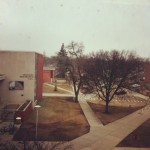
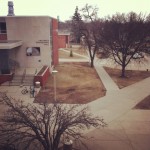
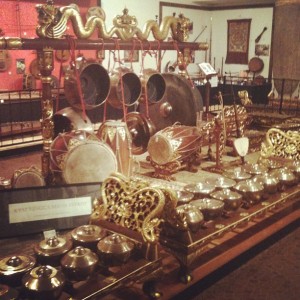
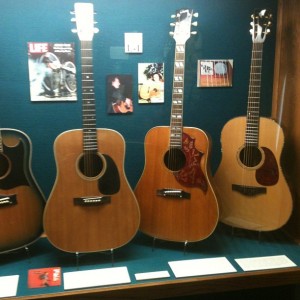
![IMG_0716[1]](https://www.tammyevansflute.com/wp-content/uploads/2013/03/IMG_07161-150x150.jpg)
![IMG_0717[1]](https://www.tammyevansflute.com/wp-content/uploads/2013/03/IMG_07171-150x150.jpg)
![IMG_0719[1]](https://www.tammyevansflute.com/wp-content/uploads/2013/03/IMG_07191-150x150.jpg)
